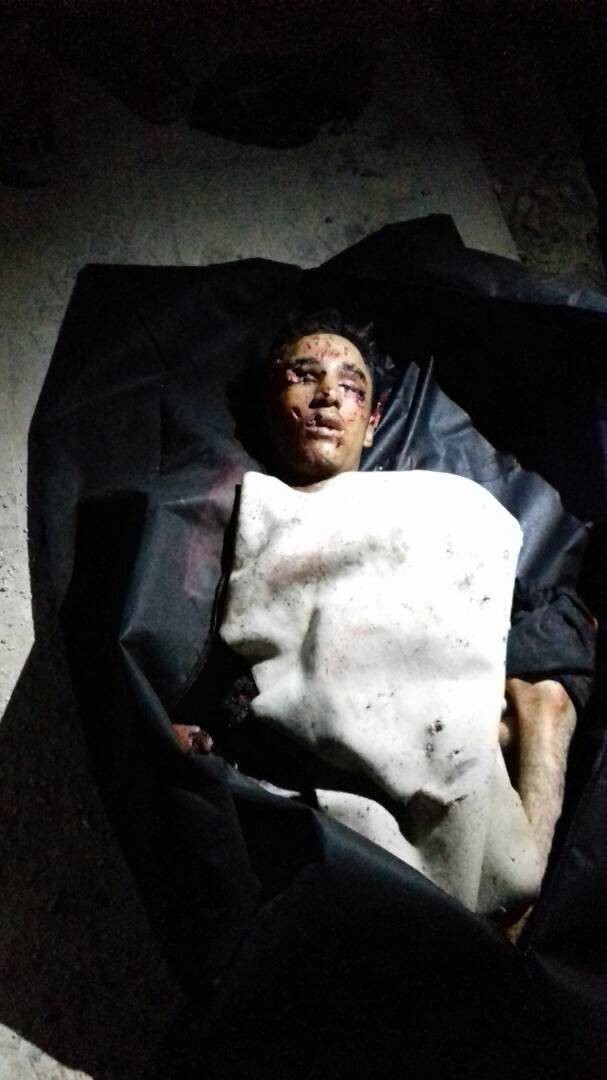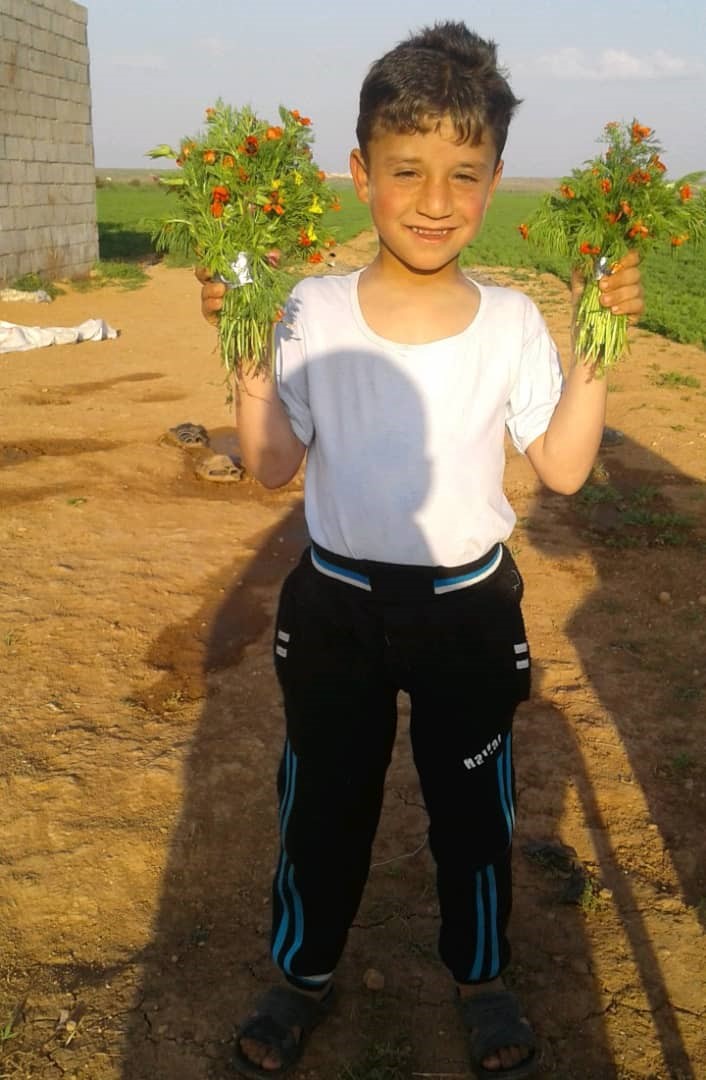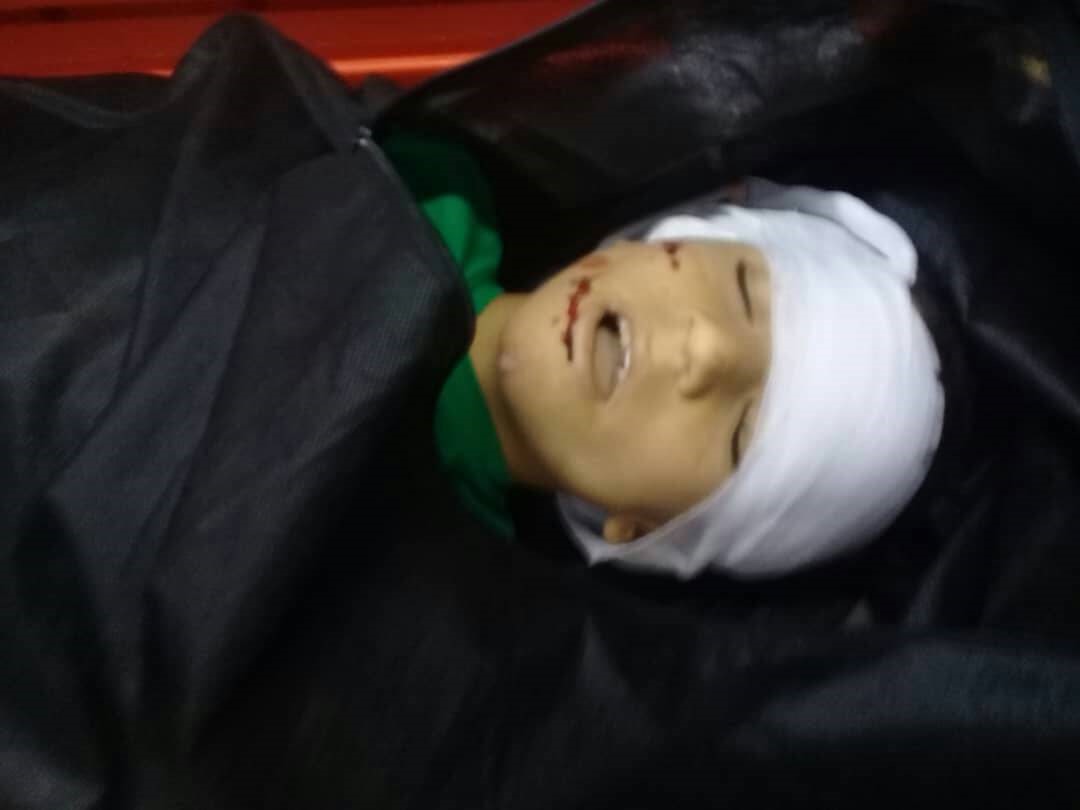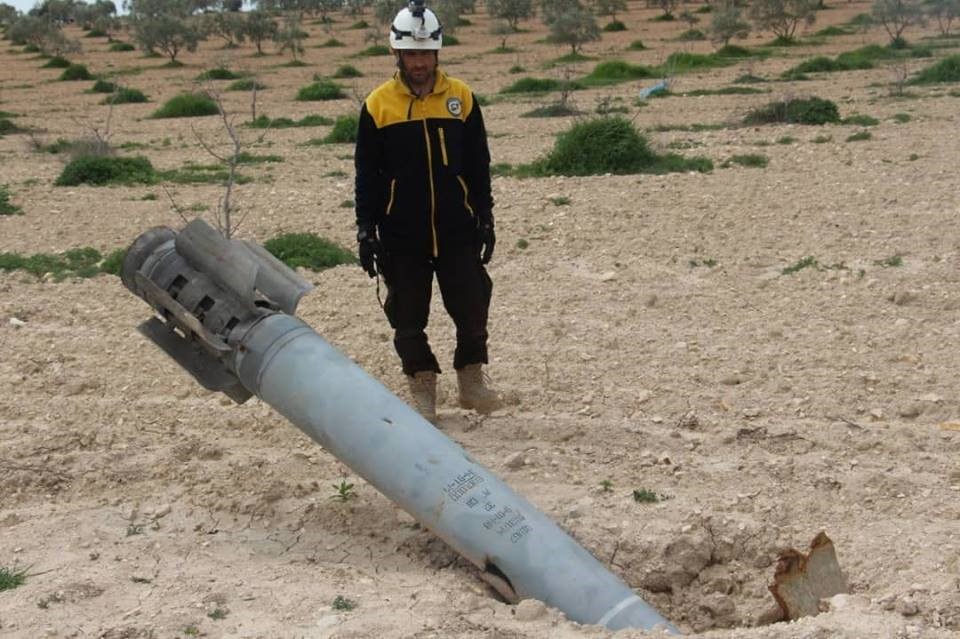introduction The bombardment by the Syrian regular forces and their allies is no longer the only obsession that still terrifies the civilians in Idlib and Hama countryside, unexploded remnants of bombardment pose a pressing danger that threatens lives of many of them, notably the children. In June 2018, different parts in Idlib and Hama countryside, which are held by armed opposition and other Jihadist factions, witnessed the death and the injury of many children due to remnants of bombardment, especially the unexploded cluster munitions[1].
According to the field researcher of STJ, since the beginning of 2018, the Syrian regular forces and their allies have escalated the intense of aerial bombardment on towns and cities of the north and west countryside of Hama in addition to the south countryside of Idlib during several military clashes between Syrian regular forces and armed opposition factions. He noted that the bombardment renews almost daily on towns and cities of the northern countryside of Hama such as Kafr Zita, Lataminah, Latmeen, which are considered lines of contact with Syrian regular forces-controlled areas such as Halfaya. The points stationed by the Syrian regular forces in Sahl al-Ghab located in the Western countryside of Hama such as "Joreen Camp" target the adjacent villages like al-Hawash and Ankawi. Bombardment by warplanes using various types of weapons repeated as well on towns and villages of the southern countryside of Idlib and result in many remnants of bombardment and unexploded cluster munitions and make them like ticking time bombs able to explode at any time causing civilian casualties.
These remnants pose great danger firstly on the lives of the farmers, since vast areas of agricultural lands spread in Idlib and Hama countryside, and secondly on the lives of children who are not aware of the threat of the remnants and ammunitions scattered on earth in case they come across them, the field researcher said.
STJ had prepared a special report highlighting the accounts of some children who got disfigurement and handicaps that changed their lives, in Idlib and Hama countryside, as a result of the ongoing violence in Syria. In addition to another report regarding the exposure of children especially in Aleppo countryside to the threats of unexploded cluster munitions used mainly by the Syrian regular forces and their allies over the years of the Syrian conflict.
First: Two Children Victims of Remnants of Bombardment on the North Countryside of Hama
On June 20, 2018, a cluster munition claimed the lives of the child Median Kamal Mahmoud, 10 years old, and his brother's Anas Kamal Mahmoud, 19 years old, in Morek city located in the north countryside of Hama. The father was mourned with the death of both of them at once, plus the injury of other members of the family. In this regard, he said to STJ,
"two years ago, we displaced from Atshan village in the north countryside of Hama because of the deterioration of the conditions and the intensity of shelling, so we moved to Morek. On June 20, 2018, one of my neighbors asked me to help him water the olive trees that are near my house in exchange for some money, and indeed I sent my two children. I let them go since we desperately needed money because of the poverty we were experiencing. During their work, a cluster munition, a remnant from the aerial bombardment on the city, exploded. As soon as I heard the explosion, I hurried to the location where my children were working. It was like a thunder had struck me when I saw them lying on the ground, covered with blood and dead. Until today, I blame myself for that, if I had not agreed to send them at the time, they would have been alive right now. My tongue failed to utter a word because of the horror of what I saw. My wife and my both daughters got medium wounds from the intensity of the explosion. The Civil Defense teams arrived immediately at the impact site. I buried my children Anas and Median with my own hands, and then we transferred one of my daughter to the hospital at Ma'arat al-Nu'man located in the south countryside of Idlib, but the other one along with her mom were transferred to the hospital in Bab al-Hawa. Their condition is stable now."

Image of the child victim Anas Kamal Mahmoud following his death on June 20, 2018.
Photo credit: the family of the child victim Anas.

Image of the child victim Median Kamal Mahmoud prior to his death on June 20, 2018.
Photo credit: the family of the child victim Median.

Image of the child victim Median Kamal Mahmoud following his death on June 20, 2018.
Photo credit: the family of the child victim Median.
Second: Ticking Time Bomb Claims Life of A Child in al-Tamanah Town, Idlib Countryside
Children in Idlib were not spared as well from the remnants of bombardment on their towns and cities by the Syrian regular forces and their allies. In Jarjanaz town, the kid Riyad Omar al-Hammadish, 12 years old, was killed in June 2018, while he was working in order to provide sustenance his poor family. In this regard, the uncle of the child told STJ,
"early 2018, we were forced to displace along with my brother's family that compose of six members from Sinjar town in the south countryside of Idlib, and we headed to Jarjanaz town. 7 months after we stayed there, and because of poverty, my nephew Riyad suggested to work in picking up and selling the herb "capparis spinosa[2]" to participate in providing sustenance. Days after his search for a job in the town, Riyad found no job, then he heard about a job, a job that is dangerous to any child of his age, it was the search for "capparis spinosa" in the high areas such as hills and mountains, then selling it to the traders to sue it as medicine. Despite the dangerous and the hardships of this job, Riyad decided to start working. He and a group of children used to go to al-Tamanah town to pick up the herb "capparis spinosa", since that town is full with it. And then they sold the plant to the shopkeepers with very cheap prices."
In the morning on June 12, 2018, Riyad, as usual, went to al-Tamanah, Idlib countryside, to do his job searching for the herb "capparis spinosa", but a cluster munition from the warplanes attacks was waiting for him; it exploded and killed him at the spot.
The uncle added:
"we received the news of his death with so much sadness and sorrow. I hurried with his father towards the town. Riyad was dead, and the bomb had deformed his entire body. We brought his body to Jarjanaz town and we buried him there, where the family lives. It was such a heartbreaking news to his parents and his little siblings as well. Although Riyad was so young, he endured intolerable burdens to secure sustenance for his family. At the end, he is a victim of the remnants of the bombardment carried out by the Syrian regime and its Russian ally on the civilians in the south countryside of Idlib and on all areas out of their control."
Third: Spread of Remnants of Bombardment in Idlib and Hama Countryside
In another testimony from Mosab al-Qadour, director of the Civil Defense center at al-Tamanah located in the south countryside of Idlib, said that the Civil Defense members are permanently and continuously carrying out campaigns to clear the remnants of the bombardment that are left by air and ground shelling over the past six years.
He said:
"In 2017 only, more than 350 airstrikes were counted from warplanes affiliated to the Syrian regime and the Russian Air Force using various types of weapons. The year 2018 also witnessed escalation in the intensity of the bombardment. The engineer team is spotting these remnants and dispose of them in different ways for example, they dismantle them or they explode them remotely, far away from the densely populated areas.
There are huge numbers of remnants from unexploded rockets or cluster munitions that had been dropped by the Syrian warplanes and the Russian Air Force. There are many which had yet to be uncovered and we know not their location, consequently, they constitute a great danger on the lives of the civilians. We have encountered many incidents of explosion of remnants of bombardment that killed and injured many civilians. Moreover, we have counted 5 cases of deaths and 2 cases of injuries in al-Tamanah alone as a result of the explosion of theses remnants during 2018, one of them was when the child Riyad Omar al-Hammadish was killed. The engineer team of the Civil Defense center is conducting awareness campaigns over the year in schools and civic institutions to aware the people about the danger of such remnants."

Image showing a side of the remnants of the bombardment on al-Tamanah town in Idlib countryside during May 2018.
Photo credit: the Syrian Civil Defense in Idlib.
Manahi al-Ahmad, a media activist from Hama countryside, confirmed to STJ that hundreds of unexploded cluster munitions are still there in Idlib and Hama countryside, which omening a pressing danger on the lives of the civilian residents, notably the children. He continued,
"Over the past years, the area witnessed violent battles between the Syrian regular forces and the armed opposition factions. The battles were interspersed with aerial escalation by the warplanes of the Syrian regular forces and the Russian Air Force using various types of weapons being cluster munitions, vacuum (thermobaric), percussion, barrel bombs among others, in addition to the ground shelling carried out by the Syrian regular forces deployed in military barracks and checkpoints in the Syrian regime-controlled towns, for example, Mahardah, al-Saqlibiya in the west countryside of Hama, in addition to the cities of Tyba al-Imam, Halfaya north of the city. A great proportion of these ammunitions, specially the rockets loaded with cluster munitions, do not exploded immediately at the time of dropping them, but remain and can explode at any time.
It is known that the countryside of Idlib and Hama have lots of agricultural lands where civilians often go to plant and plow their lands, thus complicating the matter, since many of these unexploded ammunitions that are scattered here and there are hidden among the rocks or between agricultural crops and cannot be seen and detected by experts. The fear is still there that any one of them might explode leaving death and devastation behind."
[1] Cluster munitions are weapons consisting of a container that opens in the air and scatters large numbers of explosive submunitions or " bomblets " over a wide area. Depending on the model, the number of submunitions can vary from several dozen to more than 600. Cluster munitions can be delivered by aircraft, artillery and missiles.
Most submunitions are intended to explode on impact. The vast majority are free-falling, meaning that they are not individually guided towards a target.
Cluster munitions were first used in World War II and a large proportion of currently stockpiled cluster munitions were designed for the context of the Cold War. Their main purpose was to destroy multiple military targets dispersed over a wide area, such as tank or infantry formations, and to kill or injure combatants. Cluster munitions: what are they and what is the problem? The International Committee of the Red Cross ICRC. For more information, click on:
https://www.icrc.org/eng/resources/documents/legal-fact-sheet/cluster-munitions-factsheet-230710.htm
[2] The name of herb used in medicine.

